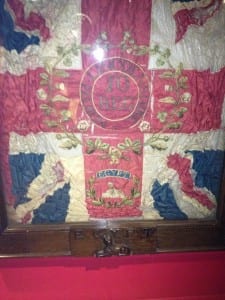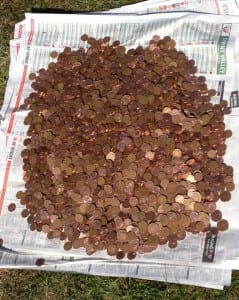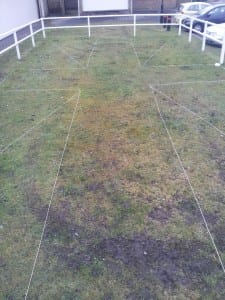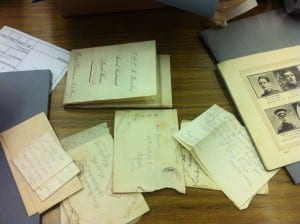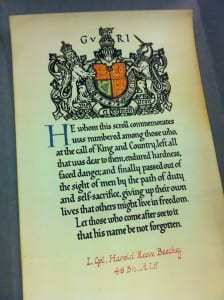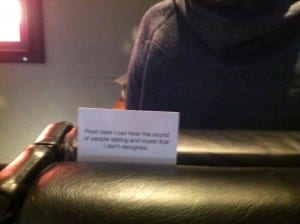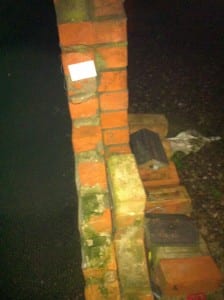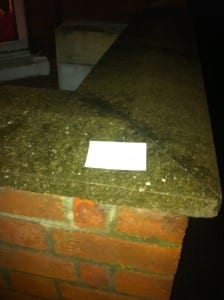The day of our performance was abnormally sunny and fortunately the wind we had was minimal. Due to this we were able to make a few changes and adaptions to our pieces as we no longer needed piles of pennies to hold down our string, that marked out the shape of our cross like art work. These changes impacted the delivery of speech and overall aesthetic of the piece. The immediate change we made was to have all the pennies in the middle of the artwork in a pile on which the speaker counting to 9 thousand stood on. We found that this created a sense of purpose to place the pennies and made the journey to reach the pennies more direct and cleaner. The counter also formed a small platform in which they appeared elevated to project the numbers being counted. As a performance our instillation piece appeared successful, they proceeded to count and varying paces as the audience walked in and out of the site, providing a permanent visual and audio piece, which could be heard and seen through transitions between other pieces. The final summary of our piece occurred when reaching nine thousand and all the pennies were laid on the ground. As a group we all stood in the middle whilst the last counter counted the 8900 to 9000. After the 9000 had been counted to the speaker said ‘ Nine thousand Lincolnshire soliders died in the First world war ’
The artwork our work was based on was created by a Lincolnshire solider. The basic structure of the cross we were focusing upon held so many symbolic connotations that outlining them with a copper queens head imprinted coin felt patriotic in a sense but also negative as it is a symbol of sacrifice through its religious significance.
Our final piece turned out successfully by well timing our counting by the end of the piece the audience walked past as we counted our final hundred and read out the fact and the artwork was a final created spectacle glistening in the May sun. The clear message we wanted to portray was translated verbally and physically it felt poignant and relevant to the site and ground we were working upon as its completion felt like a summary of our final understanding and appreciation for the lives lost.
